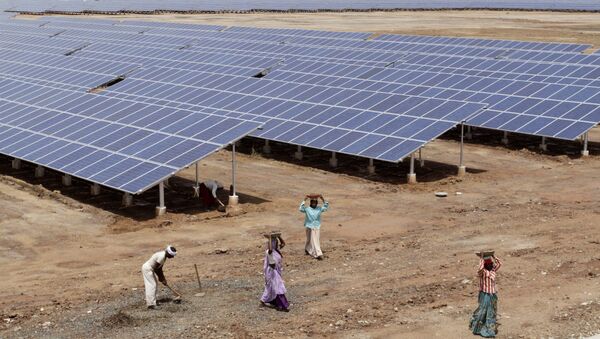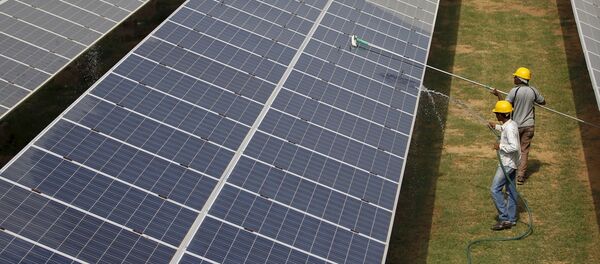The park is located in the Kurnool district of Andhra Pradesh state, which in recent years has distinguished itself as the solar power capital of India. It is a joint endeavor of India's Ministry of New and Renewable Energy (MNRE) and the Andhra Pradesh Solar Power Corporation, a private venture company mostly owned by government corporations.
Construction of the park began in December 2016, and it is expected to be fully operational in May. Already, 900 of the park's 1,000 MW capacity has been implemented. Kurnal Ultra has single-handedly made Andhra Pradesh the Indian state with the highest solar power capacity, 1,867 MW. In second place is Rajasthan with 1,812 MW.
Renewable power activists and energy industry professionals alike are impressed with the speed and efficiency of the Kurnal Ultra project. Bids for the project in April 2015, and only two years later the project is nearing completion.
"This means that the solar park model is working," said P. Vinay Kumar, COO of Greeniko Energies, which is building another solar power park in Andhra Pradesh. "We are able to scale up capacities faster. Also, the IPPs [independent power producers] are unburdened of the responsibility of land acquisition and constructing evacuation infrastructure, the activities that governments are better at doing."
"We have reached a tipping point in energy pricing and the scale is tilting in favour of solar over conventional fuel based power generation. Since it is commercial attractiveness that will drive demand in future, the clean energy capacity targets may no longer be prime drivers of demand. If the price trend continues, solar energy may take centre stage in the power mix," Kumar said to India Climate Dialogue.
Along with Kurnal Ultra, three other large solar power parks are planned for construction in Andhra Pradesh: Ananthapuram I and II (500 MW each) and Kadapa Ultra Mega Solar Park at 1,000 MW. Kadapa is expected to be operational in 2018.
These parks are part of an Indian initiative to reach 100,000 MW in solar capacity in 2022.



